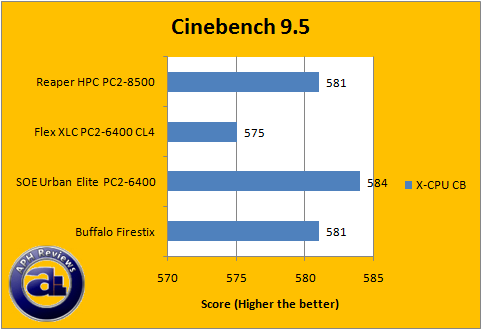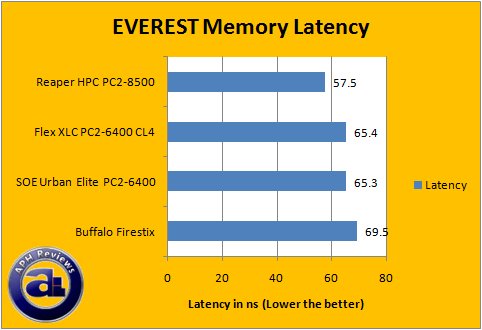Page 8 - SuperPI, Cinebench 9.5, EVEREST Memory Latency Results
About SuperPI
Super PI is a computer program that calculates pi to a specified number of digits after the decimal point - up to a maximum of 32 million. It uses FFT arithmetic and Borwein's quartically-convergent algorithm and is a Windows port of the program used by Yasumasa Kanada in 1995 to compute Pi to 232 digits. Super PI uses x87 floating-point unit, so it favors processors with good FPU performance, such as AMD Athlon 64 and Intel Core 2.
From: Wikipedia (March 14, 2007)

Our Core 2 Duo setup really did benefit slightly in our SuperPI 1M benchmark -- calculation took a second less in our test.
About Cinebench 9.5
CINEBENCH is the free benchmarking tool for Windows and Mac OS based on the powerful 3D software CINEMA 4D. Consequently, the results of tests conducted using CINEBENCH 9.5 carry significant weight when analyzing a computer’s performance in everyday use. Especially a system’s CPU and the OpenGL capabilities of its graphics card are put through their paces (even multiprocessor systems with up to 16 dedicated CPUs or processor cores). During the testing procedure, all relevant data is ascertained with which the performance of different computers can subsequently be compared, regardless of operating system.
CINEBENCH includes render tasks that test the performance of up to 16 multiprocessors on the same computer as well as software-only shading tests and OpenGL shading tests on huge numbers of animated polygons that will push any computer to its limits.
CINEBENCH 9.5 is available for Windows 32-bit and 64-bit operating systems and as a “Universal Binary” version for Apple Macintosh computers with PowerPC or Intel Core Duo processors. The database functionality and simple export allow for easy statistical data collection. CINEBENCH is used extensively by leading trade journals and hardware manufacturers such as Intel, AMD and Apple to compare computer performance.
From: Developer's Page

Much to our surprise, the OCZ Reaper HPC PC2-8500 did not make any difference in our Cinebench X-CPU benchmark. It seems that the RAM with the lowest latency came out top -- OCZ's Special Ops Edition Urban Elite running at 4-4-3-15. But take note of this -- OCZ's Flex XLC PC2-6400 CL4 running at 4-4-4-15 came out last, while the Micron D9 based Buffalo Firestix PC2-6400 and OCZ Reaper HPC PC2-8500, both running at 5-5-5-15, resulted in a tie.
EVEREST Memory Latency
For more information on EVEREST, please read the description on Page 7 of this article.

Running at PC2-6400, all three memory product's EVEREST Memory Latency score is directly related to its latency rating. However, this trend changes as the higher the memory bandwidth, the latency goes down proportionally as well. Interesting, at least on paper.
Page Index
Page 1 - Introduction, Packaging, Specifications
Page 2 - A Closer Look, Installation, Test System
Page 3 - 3DMark06 Results
Page 4 - PCMark05 Results
Page 5 - EVEREST CPU Results
Page 6 - EVEREST FPU Results
Page 7 - EVEREST Memory Results
Page 8 - SuperPI, Cinebench 9.5, EVEREST Memory Latency Results
Page 9 - Overclocking Results
Page 10 - Conclusion





